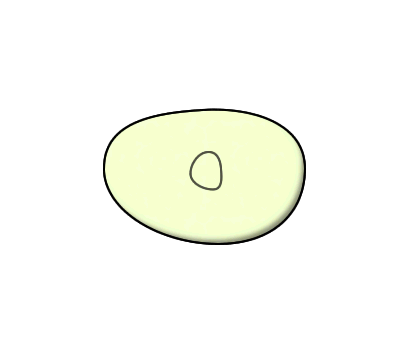READ: The Cell Cycle
3. Cell Division
Cell Division
Cell division is the process in which one cell, called the parent cell, divides to form two new cells, referred to as daughter cells. How this happens depends on whether the cell is prokaryotic or eukaryotic.
Cell division is simpler in prokaryotes than eukaryotes because prokaryotic cells themselves are simpler. Prokaryotic cells have a single circular chromosome, no nucleus, and few other organelles. Eukaryotic cells, in contrast, have multiple chromosomes contained within a nucleus and many other organelles. All of these cell parts must be duplicated and then separated when the cell divides.
Cell Division in Prokaryotes
Most prokaryotic cells divide by the process of binary fission. A bacterial cell dividing this way is depicted in Figure below. You can also watch an animation of binary fission:

Binary Fission in a Bacterial Cell. Cell division is relatively simple in prokaryotic cells. The two cells are dividing by binary fission. Blue and red lines indicate old and newly-generated bacterial cell wall, respectively. Eventually the parent cell will pinch apart to form two identical daughter cells. Left, growth at the center of bacterial body. Right, apical growth from the ends of the bacterial body.
Binary fission can be broken down into a series of three steps, although it is actually a continuous process. The steps are described below and also illustrated in Figure below. They include DNA replication, chromosome segregation, and cytokinesis.
- Step 1: DNA Replication. Just before the cell divides, its DNA is copied in a process called DNA replication. This results in two identical chromosomes instead of just one. This step is necessary so that when the cell divides, each daughter cell will have its own chromosome.
- Step 2: Chromosome Segregation. The two chromosomes segregate, or separate, and move to opposite ends (known as poles) of the cell.
- Step 3: Cytokinesis. A new plasma membrane starts growing into the center of the cell, and the cytoplasm splits apart, forming two daughter cells. This process is called cytokinesis. The two daughter cells that result are genetically identical to each other and to the parent cell.
Steps of Binary Fission. Prokaryotic cells divide by binary fission. This is also how many single-celled organisms reproduce.
Cell Division in Eukaryotes
Cell division is more complex in eukaryotes than prokaryotes. Prior to dividing, all the DNA in a eukaryotic cell’s multiple chromosomes is replicated. Its organelles are also duplicated. Then, when the cell divides, it occurs in two major steps:
- The first step is mitosis, a multi-phase process in which the nucleus of the cell divides. During mitosis, the nuclear membrane breaks down and later reforms. The chromosomes are also sorted and separated to ensure that each daughter cell receives a complete set of chromosomes. Mitosis is described in greater detail in Lesson 5.2.
- The second major step is cytokinesis. As in prokaryotic cells, during this step the cytoplasm divides and two daughter cells form.
CK-12 Foundation, Biology. http://creativecommons.org/licenses/by-nc-sa/3.0/